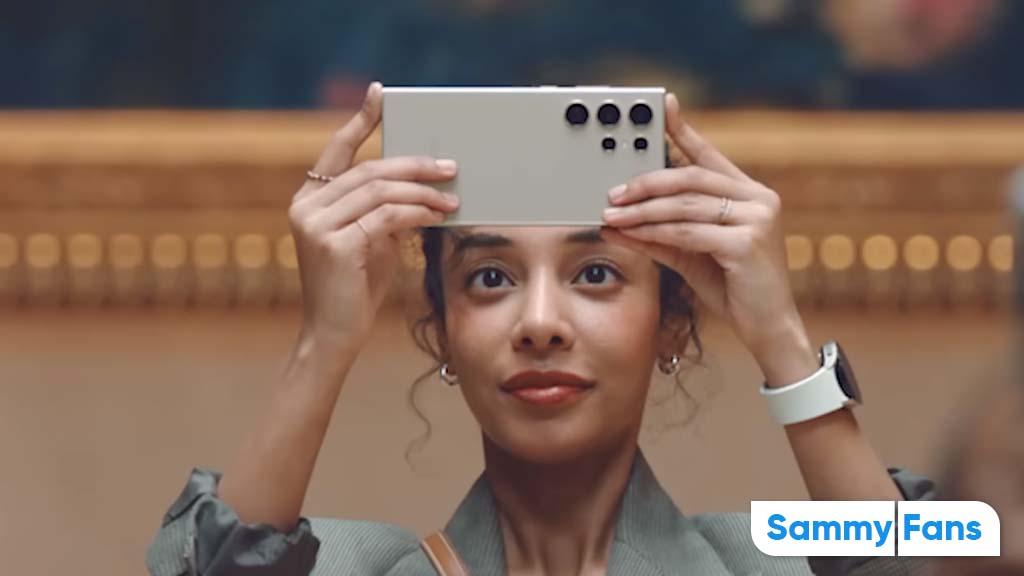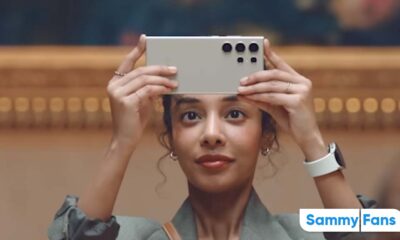
Samsung One UI vs One UI Core: Here’s the difference
Samsung has a various range of smartphones so that users can get Galaxies as per their needs and budget. However, if you pick some less expensive, or we can say entry-level device, the software experience will also be trimmed down to justify the price.
What we are trying to say, Samsung offers two versions of the One UI in their respective smartphones in which the midrangers and the expensive devices run on the usual One UI while the budget devices offer the One UI Core.
Therefore, the question arises what is the difference between these two UIs as these sound differently same from each other. Well, to help you out on this matter, we will be comparing both the One UIs in this post, so let’s get started.
Difference between One UI and One UI core
As we know the latest iteration of One UI is One UI 3.1 based on Android 11, so keep in mind that the comparison of both the software will be based on the features currently available on the Galaxy devices.
In which, One UI Core is the trimmed-down version of the usual One UI but is specially developed for the low-budget and mid-range Samsung Galaxy phones. That means it has fewer features compared to the One UI that runs on Galaxy phones of the mid-segment and the premium range.
Galaxy smartphones with One UI Core
As we clearly said above, the Core version One UI will be prepacked in the entry-level and some mid-range phones. However, these phones normally sold under the Galaxy M series and A series.
These devices include Samsung Galaxy A02, A11, A21s, A10s, M10, M11, M51. If you want to see some more devices you can head to the official website of the company.

One UI and One UI core difference, as per the features
As we mentioned above, One UI core is the stripped-down version of the One UI, but it doesn’t mean that the user will get a completely unproductive software experience. This implies, that u will face some limitations but it’s not going to affect your daily tasks.
Meanwhile, Samsung retains features such as One-handed Mode, gestures, Focus Mode, Dark Mode, ability to hide apps, Digital well-being, etc. So that overall fun will not be ruined from the main variant of One UI.
On top of this, the Korean tech giant announced recently that most Galaxy smartphones released after 2019 will receive 4 years of security updates in which both the M and A series mobiles are included. This means, you also get better security and stability in addition to the features.
Besides, the features that One UI Core doesn’t offer are mentioned below so that you will get a proper idea, how this light version of One UI is different from the main version.
Good Lock App
Good Lock app of Samsung is used to customize and add functionalities to your Galaxy phone via various modules. In which users of One UI can customize the appearance of the navigation bar, lock screen clock, filter notifications, and much more. However, this app and its modules are not supported in the One UI Core.
Windows Link
This function works via Microsoft’s ‘Your Phone app’ in which the users of the One UI-based smartphones can connect their devices with a PC to view phone notifications, messages, and photos on the computer. You can even make and receive calls on PC. But unfortunately, you can’t do it with One UI Core phones.
Bixby
This infamous voice assistance is also missing in One UI Core that offers Bixby Routines, Bixby Vision (Samsung’s version of Google Lens), and other features related to voice commands.
Easy Mode
This feature of One UI makes Galaxy phones simpler to use as it makes the objects in the phones bigger and convenient for people with bad eyesight and elderly folks. If you are interested in this feature, you should be buying a regular One UI phones, as it is not offered in One UI Core.
Samsung Pay/Pay Mini
It is one of the popular apps of Galaxy smartphones used to make quick online payments, but due to software limitations select One UI Core phones do not support Samsung Pay/Pay Mini.
Knox and Secure Folder
The Phones which have One UI Core lack the full security features offered by Samsung Knox, especially the hardware-based features offered to the midrangers and the premium Galaxy devices. However, the Secure folder is present in some mid-range devices whose hardware has the capability to run that smoothly.
Conclusion
As per the previous version, One UI 2, there were big differences between One UI and One UI Core. But the latest version, namely One UI 3, has added most of the features to One UI Core and those which are still missing will be added in the future after further optimizations.
How to check the One UI variant
- Go to Settings on your Samsung Galaxy phone
- Tap on About phone and select Software information
- Finally, on the upward side, you will see the One UI or One UI Core Version running on your Galaxy device.
STAY CONNECTED WITH US:
- Join SammyFans on Telegram
- Like SammyFans.com on Facebook
- Follow SammyFans on Twitter
- Get the latest insights through Google News
- Send us tips at – [email protected]
One UI
One UI 6.1.1’s Motion Clipper feature coming to these Samsung devices

One UI 6.1.1 introduced several new features and enhancements, one of which is the Motion Clipper feature of Editor. This feature lets you enhance your photos and create unique GIFs and stickers. This tool is perfect and useful for those who want to add a bit of fun and creativity to their photos and share them.
Motion Clipper is a minor yet powerful feature of One UI 6.1.1 that allows you to turn a part of your Motion Photos into animated GIFs or motion stickers. Users can easily use this feature when they have a motion photo in the Gallery app.
You have to open the motion photo in the Gallery app and long-press on a person or object you want to select. By doing so, you create a GIF or sticker from it. You can now use these custom GIFs and stickers on messenger apps or social media platforms that support Sticker Center.

Image Credit: Samsung
Currently, Motion Clipper is available on select Samsung models including the Galaxy Z Fold 6 and Flip 6. Additionally, several other flagships will get this feature with next major update.
These Galaxy devices will soon get the Motion Clipper feature of One UI 6.1.1.
Galaxy Z series
- Galaxy Z Fold 5
- Galaxy Z Flip 5
- Galaxy Z Fold 4
- Galaxy Z Flip 4
Galaxy S series
- Galaxy S22
- Galaxy S22 Plus
- Galaxy S22 Ultra
- Galaxy S23
- Galaxy S23 Plus
- Galaxy S23 Ultra
- Galaxy S24
- Galaxy S24 Plus
- Galaxy S24 Ultra
Galaxy Tab Series
- Galaxy Tab S8
- Galaxy Tab S8 Plus
- Galaxy Tab S8 Ultra
- Galaxy Tab S9
- Galaxy Tab S9 Plus
- Galaxy Tab S9 Ultra
One UI 6.1.1 will bring Sketch to Image feature to older Samsung devices
One UI
Expect Galaxy S24 Ultra camera magic in One UI 7!

Samsung Galaxy S24 Ultra users can expect major camera optimizations in One UI 7. A tipster reveals that the company has greatly optimized the camera of the S24 Ultra. These improvements will uplevel the camera performance.
IceUniverse now claims major significant camera optimization in One UI 7 for Galaxy S24 Ultra. The source says that the new software has seriously optimized the 1x and 5x (50-megapixel resolution) modes of the Galaxy S24 Ultra.
Samsung is rumored to release a camera-centric firmware next month. The tipster added that these changes will not be included in the incremental update. Major design changes are likely in the next update, but Samsung isn’t skipping Galaxy camera aspect.
It’s worth noting that the 5x photography will be as clear as 12MP visual experience. The S24 Ultra debuted a new 5x Periscope solution of 50-megapixel resolution. However, the long-standing optimization demand might be fulfilled in One UI 7.
One UI 7 has significantly optimized the 1x and 5x50MP modes of the Galaxy S24 Ultra, basically achieving the visual experience of 12MP, but with higher clarity. This is not included in the camera optimization of One UI 6.1.1 August, which means that Samsung is still optimizing…
— ICE UNIVERSE (@UniverseIce) July 26, 2024
That said, the next month’s update won’t improve the Galaxy S24 camera. This means the Korean tech giant hasn’t done with optimizing the functionalities. We expect more refinements and performance shifts before the Beta Program begins.
Galaxy S24 users are eagerly waiting for the Beta Program to commence. Meanwhile, the same source recently disclosed that the firmware is full of bugs. It is possible that the company may postpone the Beta activity to August.
Recently, Max Jambor reported that this year’s One UI Beta will start on July 29. Given the difficulties in the internal firmware, it’s hard to expect Beta on Monday. However, Samsung will surely manage to kick off the Beta for S24 by mid-August.
Before we conclude, it’s noteworthy that the Beta Program won’t be available globally. Samsung launches it in at least seven countries every year. If your country misses Beta, you will have to wait till October to get Samsung’s Android 15 software.
One UI
Samsung One UI 7 Beta could not release on July 29

Samsung One UI 7 Beta update may not release on Monday, July 29. Yesterday, Max Jambor revealed the launch date of the One UI 7 Beta Program. Tipster IceUniverse reports that the internal Beta has bugs that could delay the program.
One UI 7 internal Beta that is supported to be available as a Public Beta has so many bugs. Samsung insider IceUniverse says that the new software “is still full of bugs and is almost unusable.” In that case, the company is unlikely to commence the Beta.
One UI 6.1.1 rollout hasn’t yet been announced for older Galaxy devices. It is another fact that Samsung could postpone the Beta activity to the next month. The latter half of next week lands in August, where the Beta Program may commence.
Samsung’s development of One UI 7 seems comparatively slow. Google is about to release Android 15 on the Stable channel. The latest operating system version has already reached its Platform Stability milestone with Beta 3 last month.
Galaxy’s Android 15 upgrade is delaying in optimization isn’t a concerning matter. In the last two years, Samsung started Beta activity in August. As far as the One UI 7’s Stable rollout is concerned, it will hopefully begin by October this year.
One UI 7 update will bring a pure new set of app icons with elegant gradient colors. The Quick Settings and Notification Panel could also be separated. New Galaxy AI features would also be inducted throughout the Beta activity.
Read More:
One UI 7 Dynamic Pill, Quick Settings, Notification Panel and more leaked












